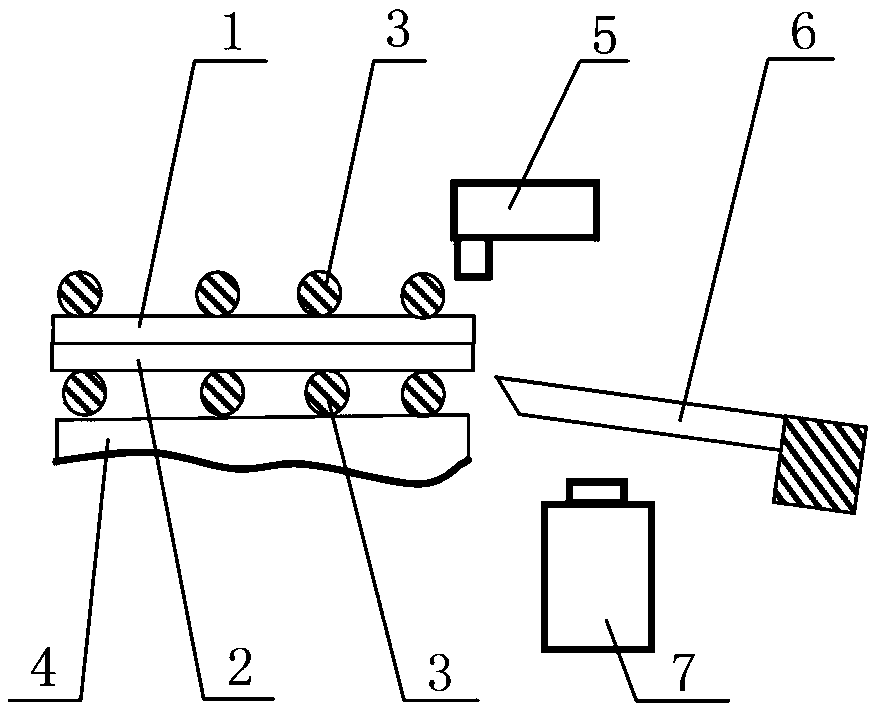Method for separating solar cell module glass
A solar cell module and glass technology, which is applied in the direction of electrical components, circuits, semiconductor devices, etc., can solve the problems of high residual glue rate on the glass surface and difficulty in obtaining complete glass, and achieve low residual glue rate, ensure integrity, and high-efficiency separation Effect
- Summary
- Abstract
- Description
- Claims
- Application Information
AI Technical Summary
Problems solved by technology
Method used
Image
Examples
Embodiment Construction
[0039] like Figure 1~3 As shown, the device for separating solar cell module glass provided by the present invention includes a transmission mechanism, a scraping mechanism, a laser scanning mechanism 5, a control mechanism, a clamping mechanism 7, a boosting mechanism, a blowing mechanism and a receiving mechanism.
[0040] The transmission mechanism is connected with the control mechanism, and it is used to drive the solar cell assembly to move under the control of the control mechanism. like Figure 4 As shown, the solar cell assembly includes an upper layer of glass 1 and a lower layer assembly 2 connected to the glass 1 through an adhesive film. The solar cell assembly is preferably a crystalline silicon solar cell assembly. In this embodiment, the lower layer assembly 2 includes silicon wafers from top to bottom. , film and back sheet; the conventional size of solar cell modules is 1 meter * 2 meters.
[0041] The transmission mechanism specifically includes a transmi...
PUM
| Property | Measurement | Unit |
|---|---|---|
| thickness | aaaaa | aaaaa |
| length | aaaaa | aaaaa |
| width | aaaaa | aaaaa |
Abstract
Description
Claims
Application Information
 Login to View More
Login to View More - R&D Engineer
- R&D Manager
- IP Professional
- Industry Leading Data Capabilities
- Powerful AI technology
- Patent DNA Extraction
Browse by: Latest US Patents, China's latest patents, Technical Efficacy Thesaurus, Application Domain, Technology Topic, Popular Technical Reports.
© 2024 PatSnap. All rights reserved.Legal|Privacy policy|Modern Slavery Act Transparency Statement|Sitemap|About US| Contact US: help@patsnap.com










